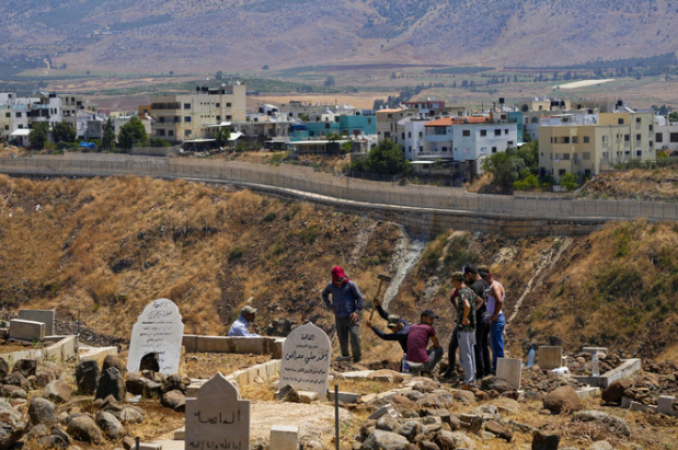
Kafr chouba: The border between Lebanon and the Israeli-occupied Golan Heights, which divides the small village of Ghajjar in half, has been a source of contention between Israel and Lebanon for many years. But after a protracted calm, the argument has started to heat up once more.
Israel has been erecting a wall around the portion of the village that is located in Lebanese territory, drawing criticism from Hezbollah, a Lebanese militia group that claims Israel is attempting to annex the area. Concerns about possible violence were raised after a recent gunfight in the neighbourhood.
The unease along the Lebanese-Israeli border, where Israel and the Iranian-backed Hezbollah fought a destructive 34-day war in the summer of 2006, is increased by the rising tensions over GHajjar.
Also Read: Mankind's Lunar Quest: United States, Russia, China, India, and the Journey of Chandrayaan-3
Despite frequent flare-ups of tension, the two sides have studiously avoided open conflict ever since. However, each side consistently asserts that a new conflict could break out at any time.
A new source of concern amid broader unrest is the dispute over a small village in the verdant hills where Lebanon, Israel, and Syria converge. Bloodshed in the West Bank has increased over the past week, following a significant two-day offensive that Israel claims was directed at Palestinian militants. Large-scale anti-government protests have been sparked by the hard-right government's efforts to reform the judicial system in Israel.
Lebanese shepherd Ali Yassin Diab grazed his sheep and goats nearby and pointed to the portion of GHajjar that was surrounded by the Israeli wall, saying, "This is Lebanese land, not Israeli land." UNIFIL personnel from the UN's peacekeeping mission observed distantly. Yassin used to bring his herds there to drink at a pond in the early 2000s, but he has since been cut off.
Also Read: The 'longest' strike to ever affect the country's healthcare system is currently underway
The division of the village is an unusual result of Israel's long-running wars with its neighbours.
GHajjar was formerly a part of Syria but was taken by Israel as part of Syria's Golan Heights in the 1967 Middle East war, which Israel later occupied and annexed with little international acclaim.
As Israel held nearby Lebanese territory in southern Lebanon for 18 years, the population of GHajjar grew in the 1980s and 1990s. When Israel left Lebanon in May 2000, UN surveyors drawing temporary borders determined that the northern portion of the GHajjar belonged to Lebanon and the southern portion to the Golan, thus dividing it in two.
Six years later, during the Israel-Hezbollah conflict, Israeli troops entered GHajjar's northern region. Since then, they have been occupying it, and a fence was put in place to bar entry from Lebanon. Israel agreed to leave GHajjar as part of the cease-fire that put an end to the fighting in 2006, but it insisted on reaching a deal to prevent Hezbollah from entering the village.
The Israeli Foreign Ministry said in a statement to the Associated Press on Friday that Israel acknowledges the line dividing the village in 2000, but claimed that after the division, "Hezbollah established itself in the village" and attempted to kidnap an Israeli soldier.
The majority of GHajjar's 3,000 residents, some of whom also have Lebanese citizenship, are Israeli citizens and primarily identify as Syrians.
Also Read: From Churchill to Queen Elizabeth: Stars Embracing the Legion of Honor
Israel began building a concrete wall around the village's northern section last year. Additionally, it started promoting village tourism among Israelis. The wall "is on the same route as the fence that was in place before," according to the foreign ministry's statement, surrounding the village.
Hezbollah erected two tents nearby, including one in the vicinity of Chebaa Farms, which both Israel and Lebanon claim as their own territory, in what appears to be retaliation for the wall's impending completion. What's inside the tents is unclear.
The tents, according to Israel, were several dozen metres (yards) inside of Israeli territory, which Israel claimed in a complaint to the UN. According to Hezbollah, the tents are on Lebanese soil.